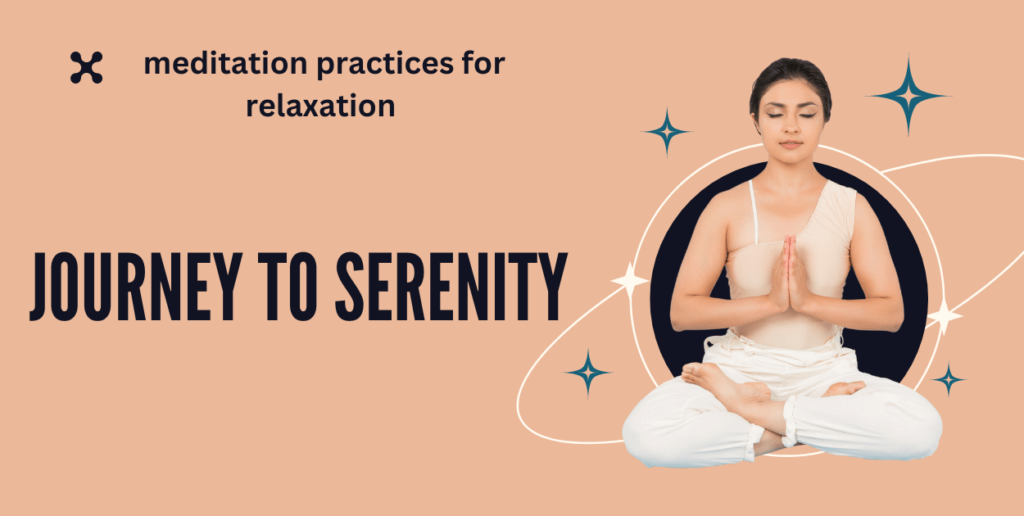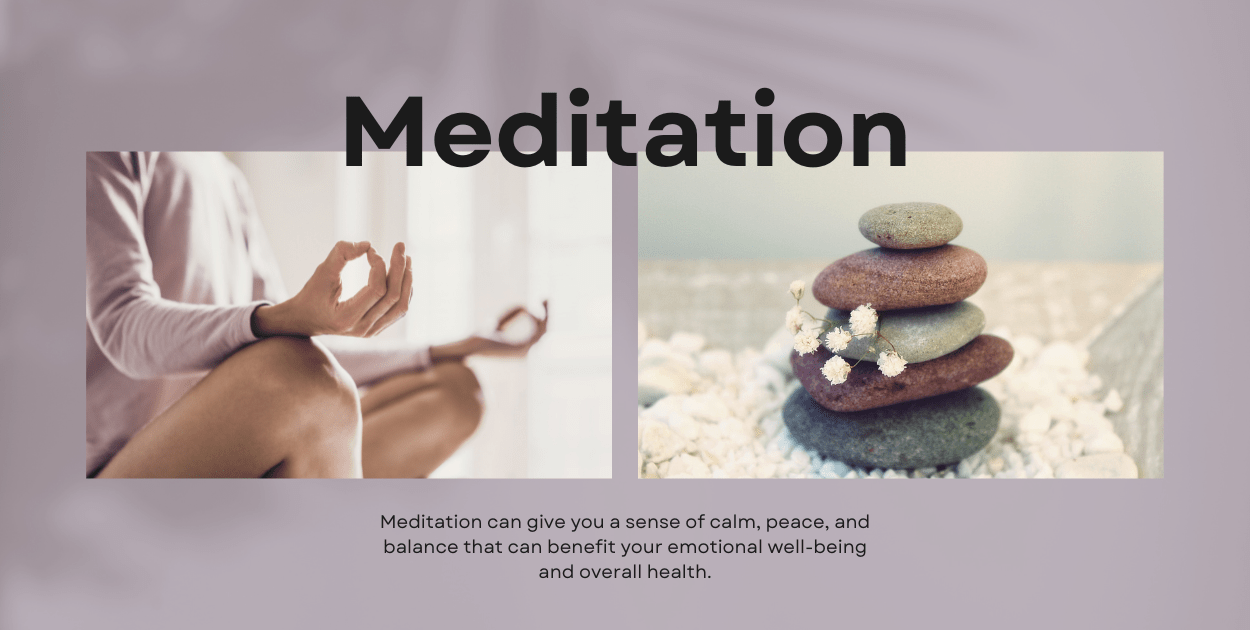Importance of inner peace in a hectic world: In today’s fast-paced world, finding a moment of quiet and peace is more necessary than ever. The stresses of everyday life can be overwhelming, making inner tranquility not just a luxury, but a necessity for maintaining mental and emotional health. so the deep meditation practices for relaxation is crucial for survival.
Overview of deep meditation benefits: meditation practices for relaxation can provide a multitude of benefits such as stress reduction, improved concentration, and a boost in overall well-being. By exploring deep meditation techniques, you can access profound depths of relaxation and clarity.
Structure of the article: This post outlines seven powerful deep meditation practices for relaxation. Each section will offer insights into the practices, detailed guides on how to do them, and tips to overcome common challenges.
1. Meditation and Its Impact on Mental Health
- Defining Deep Meditation: Deep meditation refers to techniques that help achieve a profound state of peace and heightened awareness, differing from lighter, more accessible forms of meditation that might focus solely on relaxation or brief mindfulness practices.
- Scientific Backing: Numerous studies show that meditation can significantly impact mental health, reducing symptoms of anxiety and depression, enhancing mood, and even altering the structure and function of the brain in ways that promote a healthier mind.
- Initial Steps: Preparing for deep meditation practices for relaxation involves creating a conducive environment—quiet, comfortable, and free from interruptions. It’s also helpful to adopt a non-judgmental attitude towards whatever thoughts or feelings arise during meditation.
2. Breath Focus Technique
- Basics of Breath Focus: Begin by finding a comfortable sitting posture. Close your eyes and simply notice your breath. The goal isn’t to change your breathing patterns, but to observe them.
- Deepening the Practice: To deepen the breath focus, count your breaths or imagine the air moving in and out of your body as a color or light, which can help maintain focus.
- Common Challenges and Tips: A common issue is becoming distracted by thoughts. When this happens, gently redirect your attention back to your breath without criticizing yourself.

3. Body Scan Meditation
- Introduction to Body Scan: This technique involves mentally scanning your body for areas of tension or discomfort. It’s a method used to connect body and mind and promote relaxation.
- Step-by-Step Guide: Lie flat on your back and start by focusing on the sensations in your feet—temperature, pressure, tingling. Slowly move your attention up through each part of your body.
- Troubleshooting Guide: If your mind wanders or if you doze off, it’s perfectly okay. Gently bring your focus back to the last body part you remember scanning.
4. Mindfulness Meditation
- Core Principles of Mindfulness: Mindfulness is all about being present and fully engaging with the moment without judgement.
- Daily Practice: Integrate mindfulness into daily routines, like eating or walking. Focus deeply on these activities as they occur, noting the textures, motions, smells, and sounds.
- Mindfulness Exercises: Practice mindfulness during routine tasks such as brushing your teeth. Focus on the taste of the toothpaste, the sensation of the brush on your gums, and the sound of the brushing.
5. Mantra Meditation
- Choosing Your Mantra: Select a word, phrase, or sound that resonates with you personally. It could be traditional, like ‘Om,’ or something personal and meaningful.
- Mantra Meditation Explained: Repeat your mantra silently or aloud in a rhythmic and focused manner, aligning your attention solely on the sounds and vibrations.
- Fostering Deeper Connection: To enhance your connection, visualize the mantra’s meaning or sound radiating outward from your body into the universe.
6. Guided Visualization
- Concept of Guided Visualization: This approach involves visualizing a peaceful scene or event to bring about calmness and clarity.
- Conducting a Session: Use a recorded guide or script to visualize a tranquil place—imagine all the sensory details like sights, sounds, and smells.
- Visualization for Specific Goals: Tailor your visualizations to address specific stressors or goals, such as visualizing a successful work presentation or a peaceful family gathering.

7. Walking Meditation
- Integrating Movement with Meditation: Combines the physical act of walking with the mindfulness of meditation. It’s great for those who find stillness challenging.
- Step-by-Step Walking Meditation: Find a quiet place to walk slowly. Coordinate your breathing with your steps, and truly feel each step as you walk.
- Connecting with Nature: If possible, walk in a natural setting. The natural environment can enhance the meditative experience through its inherent soothing qualities.
8. Progressive Relaxation
- Understanding Progressive Relaxation: Focuses on tensing and then relaxing each muscle group. This technique helps identify areas where you hold stress.
- Session Structure: Start from the lower part of your body and work your way up, tensing muscles for a few seconds then relaxing them for longer.
- Advanced Techniques: With practice, you may be able to sense and relax almost imperceptible muscle tensions, gaining deeper relaxation.
Summary: meditation practices for relaxation
Highlighting the meditation techniques’ possible effects on individual wellbeing is crucial while summarizing them. The summary ought to highlight the different methods that were covered and their advantages, reminding readers to incorporate these habits into their everyday lives. It is important to encourage readers to incorporate these meditation practices for relaxation since it inspires them to take initiative and include meditation into their daily routines. Lastly, discussing ideas for reaching inner peace highlights how crucial these practices are to achieving inner peace.
By integrating any of these deep meditation techniques into their routines, individuals can experience significant improvements in both mental and physical health. It’s essential to remind readers to start slowly, be patient with themselves, and embrace the journey toward inner peace, emphasizing that the process is just as valuable as the destination.
FAQs
What is the best time of day to meditate?
Anytime that works for your schedule, though many prefer mornings to start their day centered.
How long should I meditate to see benefits?
Even a few minutes daily can be beneficial, but ideally, aim for 20-30 minutes for more pronounced effects.
Can meditation replace sleep?
No, but it can greatly improve the quality of your sleep.
What should I do if I struggle to focus during meditation?
It’s completely normal. Each time you get distracted, gently return your focus without criticism.
How can I measure my progress in meditation?
Notice any changes in your general stress level or mindfulness throughout the day, not just during meditation sessions.


